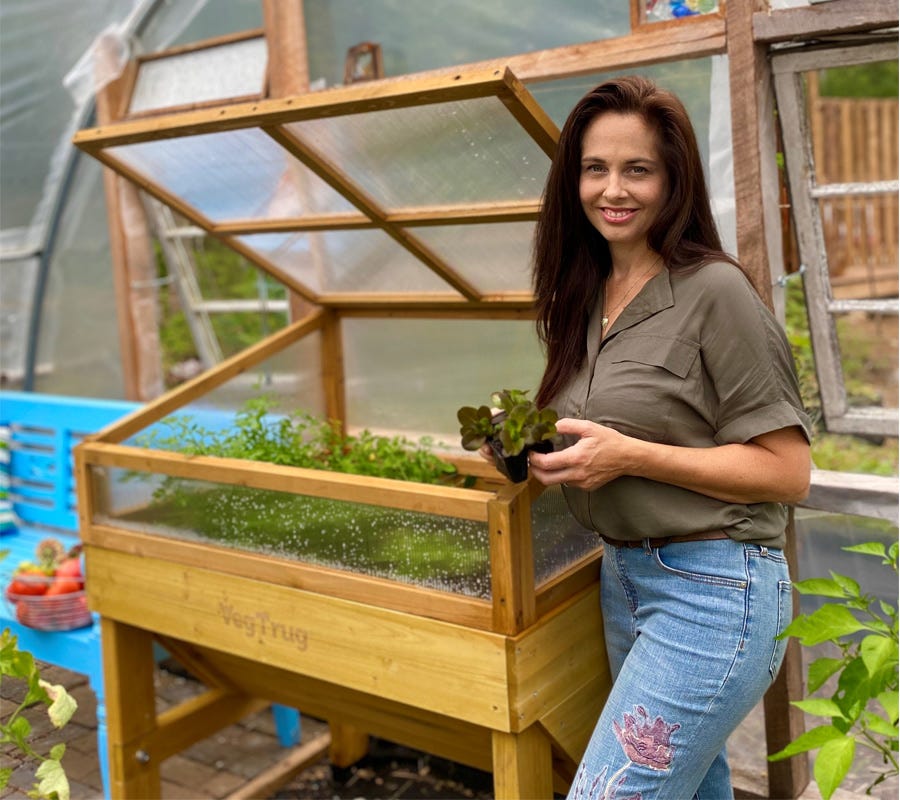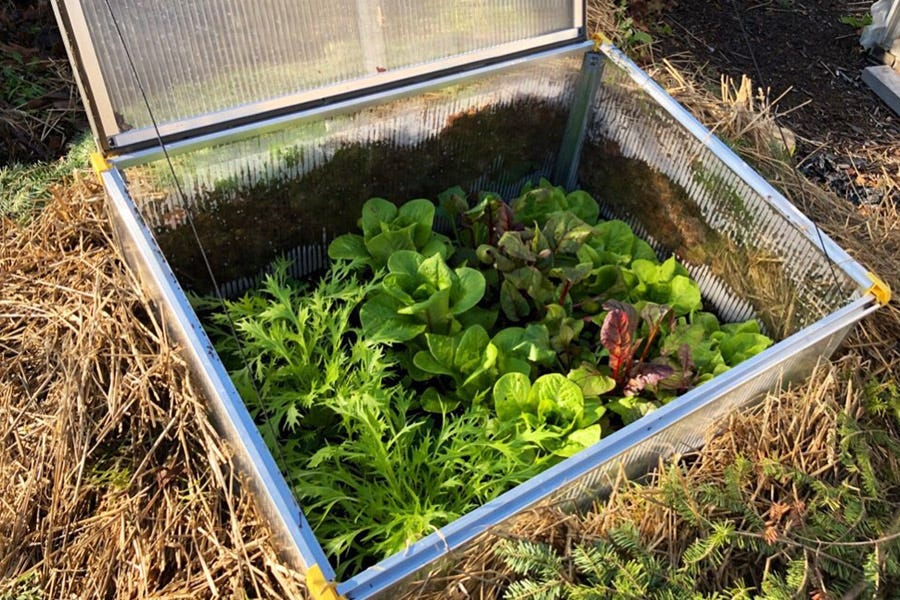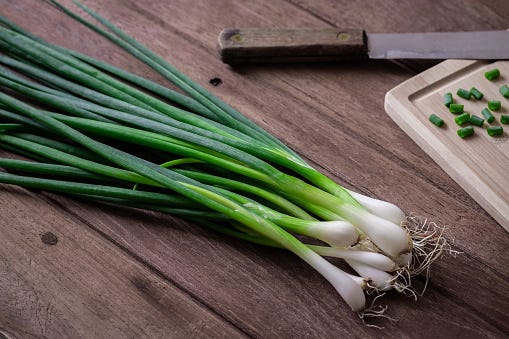DIY on a Budget: Cold Frame Gardening
This simple structure captures solar energy and creates a microclimate around plants allowing you to extend the harvest by weeks or months.


What is a cold frame?
One of the easiest ways to stretch the vegetable harvest into autumn is by using a cold frame. A cold frame is a bottomless box with a clear top that can be placed on garden beds or even on top of an elevated planter like a VegTrug. This simple structure captures solar energy and creates a microclimate around plants allowing you to extend the harvest by weeks or months.
Cold frames have two main components: a box and a top. You can buy a cold frame kit, like our small or medium cold frames by Veg Trug, or DIY your own to fit your garden beds. Most cold frame boxes are made from untreated lumber like cedar or hemlock. Some kits have polycarbonate boxes. The top can be made from an old window, a piece of polycarbonate, or even an upcycled glass door.
Choosing a site
Before you decide on what type of cold frame to buy or build, take a look at your site. A cold frame should face south to capture as much sunlight as possible. Look for trees or buildings that may block light. Cold frames can be placed on top of the ground or sunk several inches into the soil to increase heat retention. Be sure to amend the soil with compost or manure before planting to encourage healthy growth.
Planting a cold frame
A cold frame gives you a head start on the spring growing season by allowing you to plant hardy vegetables like spinach, lettuce, or carrots up to eight weeks earlier than in the open garden. By mid to late summer it’s time to start planning for fall and winter harvesting. Depending on the crop and your location, you can use a cold frame to stretch the harvest into late autumn or even winter.
Caring for cold frame vegetables
Gardening in a cold frame is much the same as growing vegetables in a garden. The plants need sun, water, and good air circulation. A south-facing cold frame should provide plenty of light. As for soil moisture, pay attention and water when the soil is dry. On a rainy day, the top can be opened to allow for natural irrigation.
It’s also essential to vent the frame to prevent overheating. When the outside temperature is above 4 C and the sun is out, prop the frame open. It’s amazing how quickly the temperature inside a frame can rise on a mild day. By late spring, the cold frame top can be left open during the day and only closed at night or if the weather is bad.


6 Crops for a Fall Cold Frame:


1 Spinach
Spinach is a cool weather green that can be direct seeded in a cold frame from mid to late summer for autumn harvesting.


2 Lettuce
Tender, crisp lettuce is the most popular salad green grown in gardens, but it’s also cold hardy. Seed or transplant lettuce into a cold frame from mid-August to mid-September.


3 Arugula
Unlike mild flavoured lettuce, arugula adds heat to salads with its peppery leaves. It’s also quick and easy to grow in garden beds and cold frames. Direct seed arugula from late August through late September for weeks of gourmet salads.


4 Turnips
We love autumn greens, but there are also many root crops that can be planted in cold frames. Salad turnips offer a dual harvest of peppery leaves and sweet roots. Direct sow the seeds in cold frames in late summer for a mid-autumn bumper crop of tasty roots.


5 Radishes
Perhaps the speediest vegetable, salad radishes like Cherry Belle are ready to pull just three weeks from seeding.


6 Scallions
Scallions are essential for adding a mild onion flavour to many dishes but it’s a great choice for a cold frame. Direct sow hardy scallions in cold frames from mid to late summer and harvest from mid-autumn into winter.
